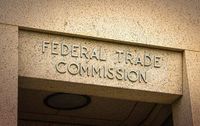On September 12, 2025, the U.S. Federal Trade Commission (FTC) launched a major investigation into two of the world’s tech behemoths—Google and Amazon—over whether they misled advertisers about how ads are priced and auctioned on their platforms. This probe, spearheaded by the FTC’s consumer protection unit, marks a significant escalation in regulatory scrutiny of digital advertising, a sector that has ballooned into a multi-hundred-billion-dollar industry over the past decade.
According to reports from Bloomberg and Reuters, the FTC’s inquiry zeroes in on whether Google and Amazon properly disclosed the terms and pricing of ads to advertisers, or if they withheld crucial information in a way that could have led to higher costs for businesses seeking to reach consumers online. The agency is particularly interested in the internal pricing processes of Google and the real-time ad auctions conducted by Amazon, especially regarding the use and disclosure of "reserve pricing"—the minimum price floor for sponsored listings that advertisers must meet to secure ad space.
Amazon’s advertising business, which generated a staggering $56 billion in revenue in 2024, has rapidly ascended to become the third-largest player in the digital ad market. Its platform relies heavily on real-time auctions to place sponsored ads within product listings. However, the FTC is now investigating whether Amazon adequately informed advertisers about the existence and role of reserve pricing in these auctions. If reserve pricing was not transparently disclosed, advertisers may have unknowingly paid more than anticipated for their ads.
Google, the undisputed leader in digital advertising, is also under intense scrutiny. The FTC is examining whether Google’s internal processes for setting ad prices led to cost increases that were not clearly communicated to advertisers. Notably, Google has previously acknowledged tweaking its ad auctions to meet revenue targets, sometimes without fully disclosing the changes to advertisers. The question now is whether these adjustments crossed the line into deceptive or unfair practices.
“The FTC’s consumer protection unit is examining Google’s internal ad pricing processes and whether it raised costs without informing advertisers,” reported Search Engine Land. This focus on transparency, rather than just competition, signals a shift in regulatory priorities. The agency is making it clear that how ads are priced and how those prices are communicated to customers are just as important as maintaining a fair competitive landscape.
The investigation comes at a time when both Google and Amazon are already facing a barrage of legal challenges from federal agencies. Just earlier this year, a federal judge ruled that Google maintains illegal monopolies in both search and ad tech, following a high-profile lawsuit from the Department of Justice (DOJ). The DOJ is now seeking to force Google to divest some of its advertising technology tools as a remedy for these monopolistic practices. Meanwhile, Amazon is grappling with its own FTC lawsuit in Seattle, which alleges the company enrolled users in Prime subscriptions without their knowledge and made the cancellation process unreasonably difficult. Both companies are scheduled to face trial in these separate cases on September 22, 2025.
The stakes are high for advertisers, who collectively spend hundreds of billions of dollars each year to promote their products and services online. If Google and Amazon did indeed obscure key details about ad pricing or auction mechanics, the financial implications could be enormous—not just for the advertisers themselves, but for the broader digital ecosystem that depends on trust and transparency.
Amazon, for its part, uses real-time auctions to determine which sponsored listings appear when users search for products. These auctions, which take place in fractions of a second, are supposed to be governed by clear rules. But the FTC is now probing whether Amazon’s disclosures about reserve pricing were sufficient. As Reuters explained, "Reserve pricing refers to the minimum price advertisers must accept before they can buy an ad." If advertisers weren’t told about these floors, they may have been at a disadvantage when bidding for ad space.
Google’s advertising system is similarly complex. The company runs automated auctions for ad placement every time a user enters a search query. These auctions, too, are supposed to operate transparently. Yet, the FTC is investigating whether Google increased ad costs through internal pricing changes that weren’t adequately communicated to advertisers. According to Search Engine Land, "Google has previously acknowledged tweaking ad auctions to meet revenue targets without always disclosing changes to advertisers." The agency wants to know if such tweaks constituted a breach of trust or even a violation of consumer protection laws.
Both companies have declined to comment on the ongoing investigation, and Alphabet, Google’s parent company, did not immediately respond to requests for comment, according to Reuters. The FTC, for its part, has not commented publicly on the specifics of the probe, citing the confidential nature of ongoing investigations.
These latest developments are part of a broader push by U.S. regulators to rein in the power of big tech companies. FTC Chair Andrew Ferguson has repeatedly stated that policing the behavior of the largest tech firms is one of the agency’s top priorities. This investigation into ad pricing transparency is just one facet of a multi-pronged regulatory effort that also includes antitrust lawsuits, proposed breakups, and new rules aimed at promoting fair competition and protecting consumers.
It’s not just the FTC that’s keeping a close eye on Google and Amazon. The Department of Justice, too, is seeking to force Google to sell off critical parts of its advertising technology business after a judge in Virginia found the company had maintained illegal monopolies. And the FTC is also pursuing a separate case alleging that Amazon holds illegal monopolies among online superstores and marketplaces.
For advertisers, the outcome of these investigations could have far-reaching consequences. If the FTC finds that Google and Amazon did, in fact, mislead advertisers or fail to disclose key pricing information, the companies could face hefty fines, forced changes to their business practices, or even structural remedies. More importantly, such findings could prompt a broader industry reckoning, leading to greater transparency and fairness in how digital ads are bought and sold.
As the digital advertising landscape continues to evolve, one thing is clear: the days of opaque pricing and undisclosed auction mechanics may be numbered. With regulators ramping up their scrutiny, advertisers and consumers alike are demanding a new era of openness and accountability from the tech giants who dominate the online marketplace.
With trials looming and the FTC’s probe intensifying, Google and Amazon now find themselves at the center of a pivotal moment for the future of digital advertising in America.





